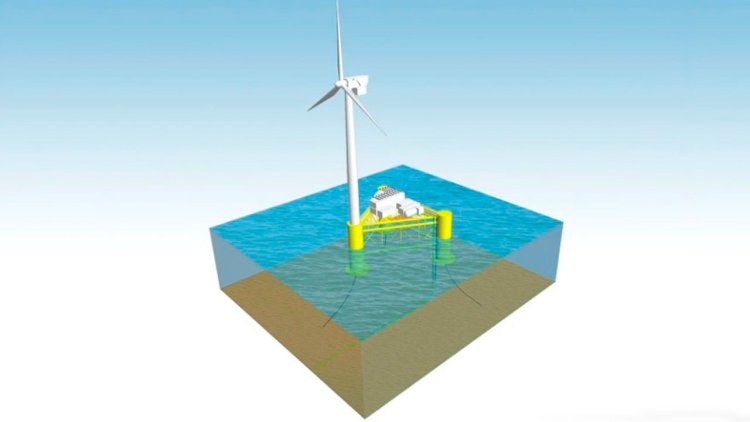Principle Power to advance FEED for Wind-to-Hydrogen Dolphyn project
When fully deployed, at an expected 4 GW total capacity, ERM Dolphyn has the potential to supply energy to heat more than 1.5 million homes

Principle Power has been contracted by ERM to advance the Front-End Engineering Design (FEED) for a Wind-to-HydrogenDolphyn 10 MW demonstrator project off the coast of Aberdeen. The contract was signed after ERM Dolphyn was awarded £8.62m of funding from the UK Government, via the Low Carbon Hydrogen Supply 2 Competition.
ERM Dolphyn (Deepwater Offshore Local Production of HYdrogeN) has developed a concept design to produce large-scale green hydrogen from floating offshore wind. The ERM Dolphyn concept employs a modular design integrating electrolysis and a wind turbine on a moored floating semi-submersible platform based upon the proven WindFloat® technology by Principle Power to produce hydrogen from seawater, using wind power as the energy source. ERM and Principle Power have been collaborating on the development of decentralized hydrogen production opportunities since 2019.
David Caine, Partner, ERM, said:
"It is now established that to meet net-zero ambitions in the UK and all around the world, hydrogen from offshore floating wind needs to be a significant component in any viable long-term solution for heat, electricity generation, and transport. The ERM Dolphyn project, a first-of-a-kind, is an innovative integrated system combining all the technologies required to bring the latest floating wind and hydrogen production technologies together to enable offshore wind resources to contribute toward hydrogen production at scale. Principle Power has been instrumental in this process, and we’re delighted to extend our collaboration."
The 10 MW demonstrator project is a key step in proving the Dolphyn concept prior to commercial-scale deployment. The demonstrator project is targeting operations in late 2025. Commercial scale projects (300MW+) are under development and expected for operation pre-2030, followed by large-scale (GW) deployment post-2030. When fully deployed, at an expected 4 GW total capacity, ERM Dolphyn has the potential to supply energy to heat more than 1.5 million homes with no carbon emissions, thus avoiding the release of millions of tonnes of CO2 into the atmosphere every year.
ERM Dolphyn is a core project for the UK’s Hydrogen coast strategy, and is expected to help generate >10,000 new jobs by 2030 and more than 100,000 by 2050. Many of these jobs will rely on the world-class skills and knowledge found in the offshore renewables and Oil and Gas sectors. This massive opportunity is not without challenges: the rapid scaling up of floating offshore wind to meet both governments’ and markets’ energy transformation goals requires an equally massive investment in the entire supply chain.



























